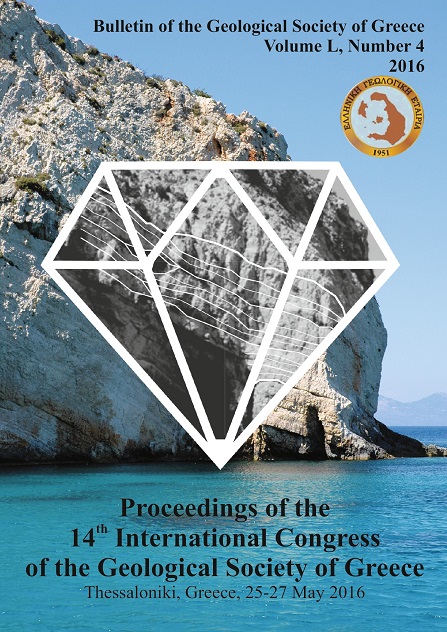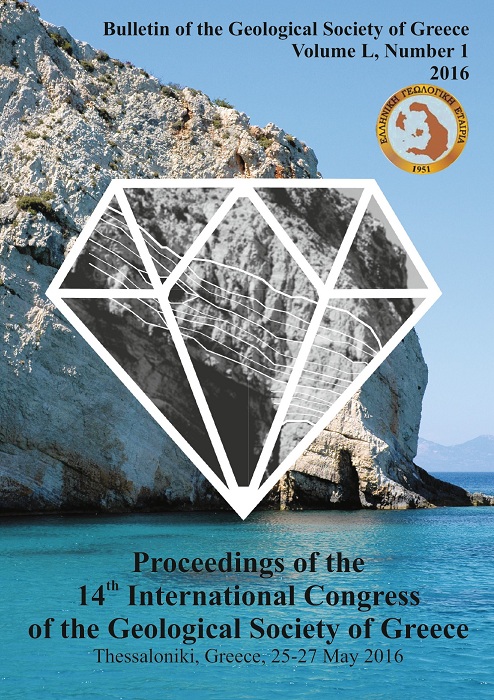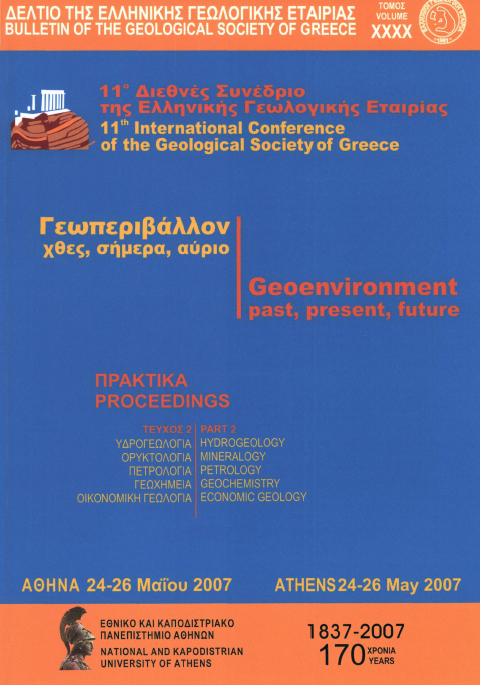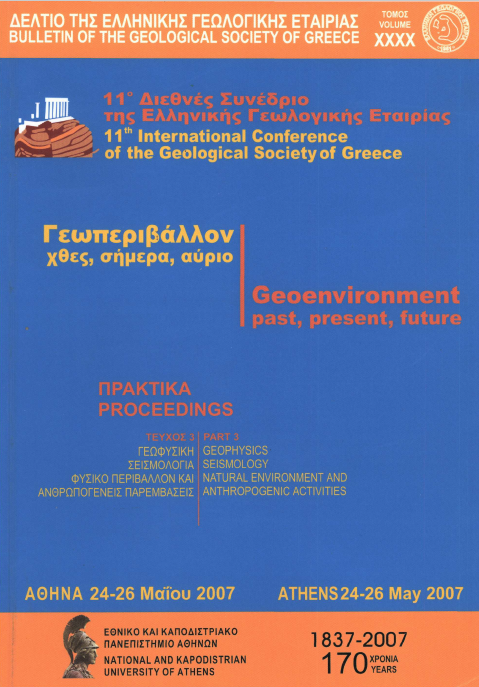PETROLOGICAL, MINERALOGICAL AND GEOCHEMICAL DATA FROM THE EOHELLENIC OPHIOLITIC NAPPE IN THE ISLAND OF SKYROS, GREECE
Résumé
The ophiolite of Skyros mainly consists of serpentinized harzburgites, gabbroic rocks, dolerites, tholeiitic basaltic lavas, rodingites, as well as ophicalcites. This ophiolitic sequence comprises of an ophiolitic mélange of pre-Upper Cretaceous age belonging to the Eohellenic nappe, has been affected by low to moderate metamorphic and metasomatic processes. Their mineral chemistry as well as their whole rock chemistry suggests that these ophiolitic rocks are associated with supra-subduction related processes. The presence of vesuvianite crystals in rodingites, as well as the occurrence of relict spinels within serpentinitic rocks, further confirms this assumption. Geochemical and petrological comparison between Skyros ophiolitic rocks and similar rocks of the Eohellenic nappe in East Thessaly and other N. Sporades islands, reveal that they all share many petrogenetical features. These eastcentral Greece Eohellenic ophiolites, and the ophiolitic rocks of the upper tectonic unit of the Attico-Cycladic Zone may possibly form an elongated ophiolitic zone associated to the hanging wall of the North Cycladic Detachment System
Article Details
- Comment citer
-
Karkalis, C., Magganas, A., & Koutsovitis, P. (2016). PETROLOGICAL, MINERALOGICAL AND GEOCHEMICAL DATA FROM THE EOHELLENIC OPHIOLITIC NAPPE IN THE ISLAND OF SKYROS, GREECE. Bulletin of the Geological Society of Greece, 50(4), 1867–1877. https://doi.org/10.12681/bgsg.11926
- Rubrique
- Petrology and Mineralogy

Ce travail est disponible sous licence Creative Commons Attribution - Pas d’Utilisation Commerciale 4.0 International.
Authors who publish with this journal agree to the following terms:
Authors retain copyright and grant the journal right of first publication with the work simultaneously licensed under a Creative Commons Attribution Non-Commercial License that allows others to share the work with an acknowledgement of the work's authorship and initial publication in this journal.
Authors are able to enter into separate, additional contractual arrangements for the non-exclusive distribution of the journal's published version of the work (e.g. post it to an institutional repository or publish it in a book), with an acknowledgement of its initial publication in this journal. Authors are permitted and encouraged to post their work online (preferably in institutional repositories or on their website) prior to and during the submission process, as it can lead to productive exchanges, as well as earlier and greater citation of published work.







